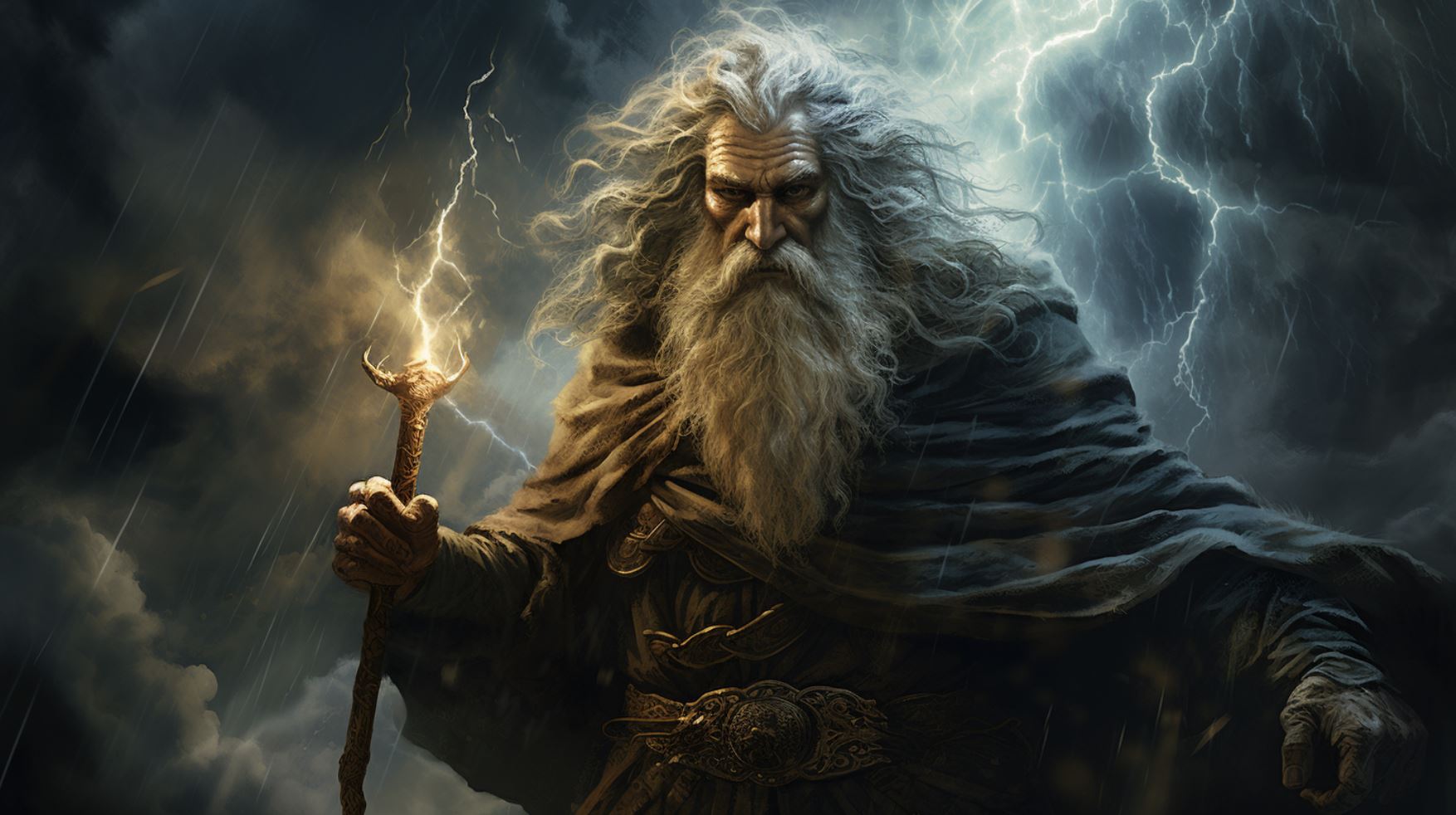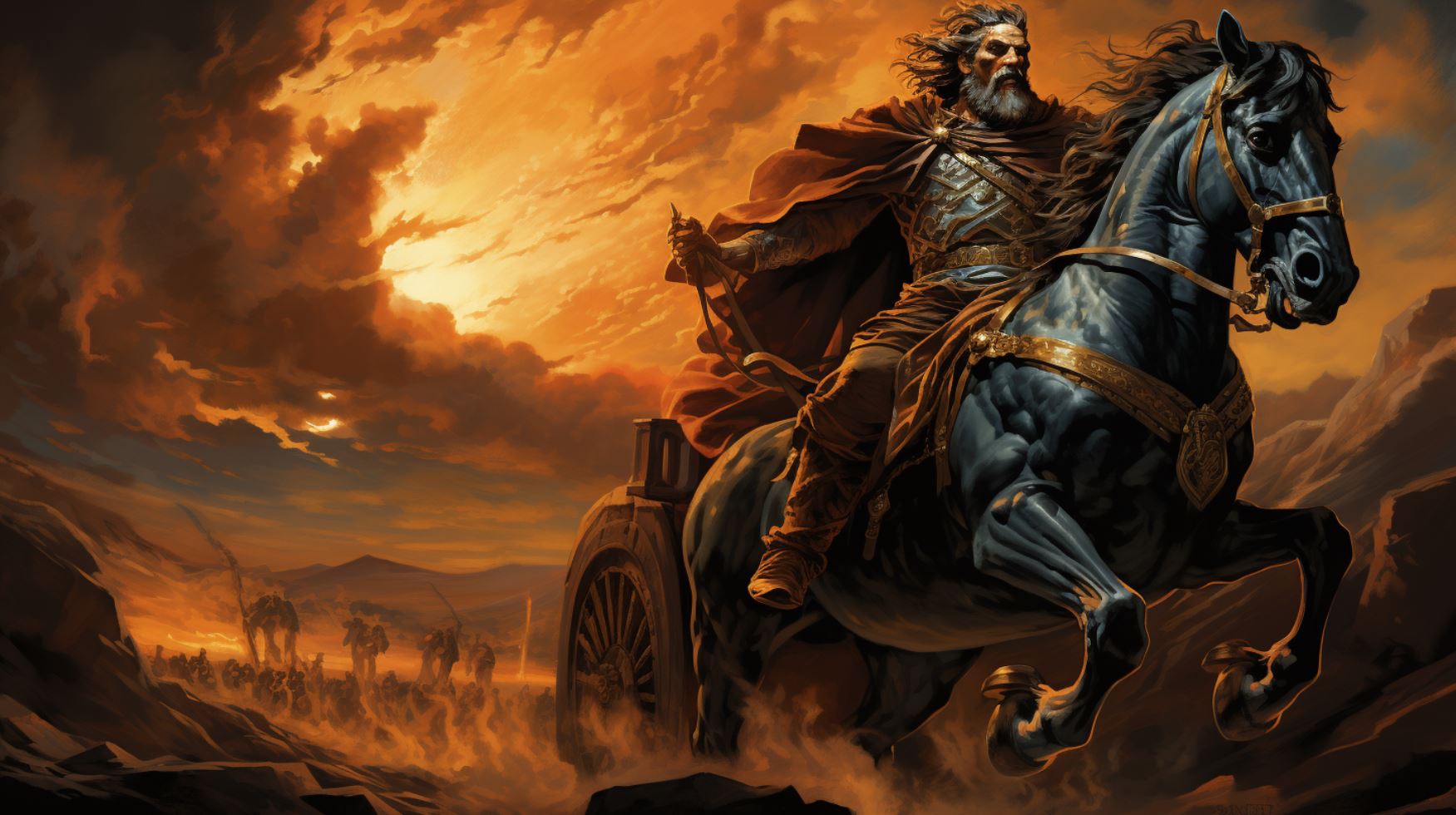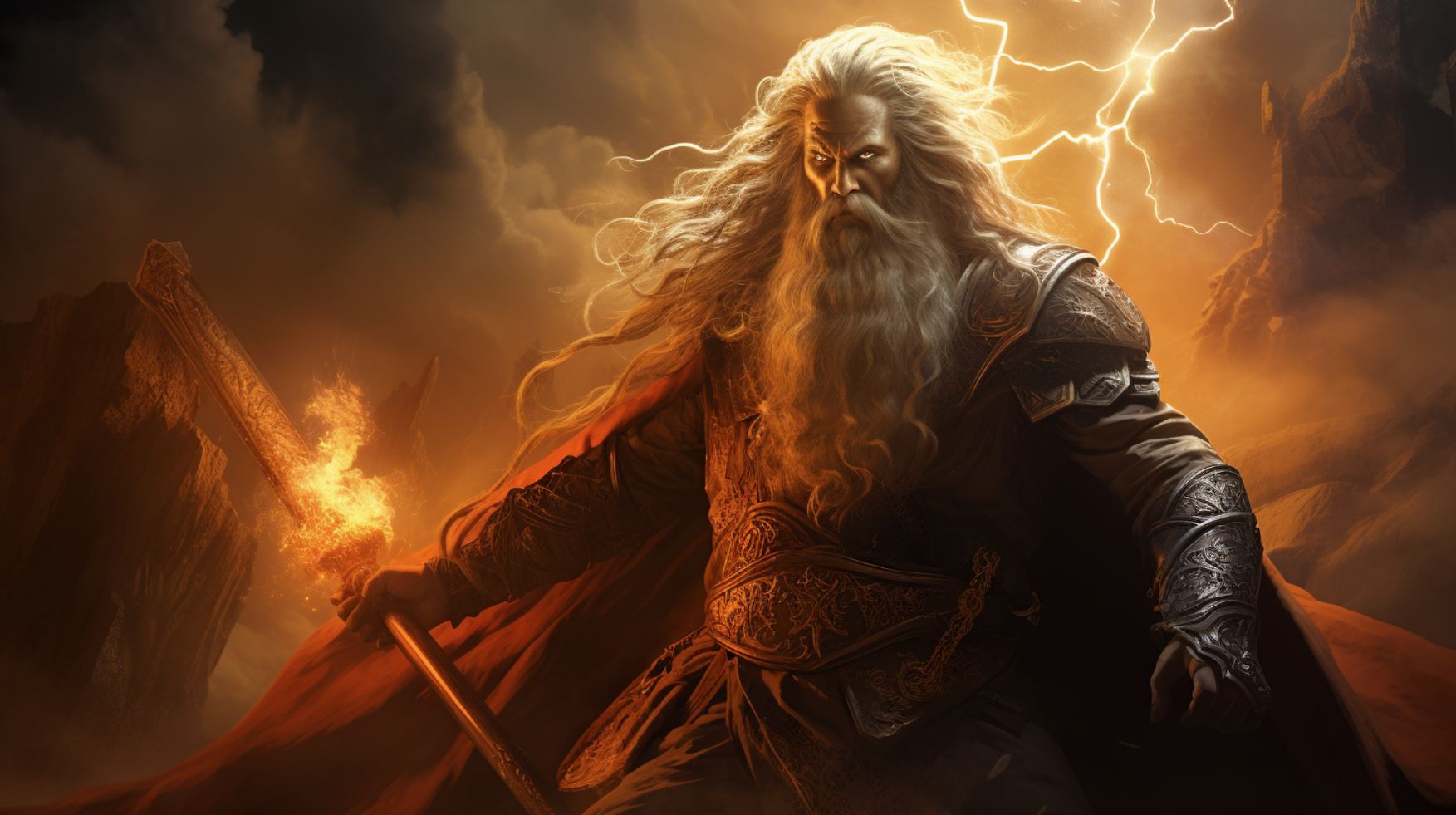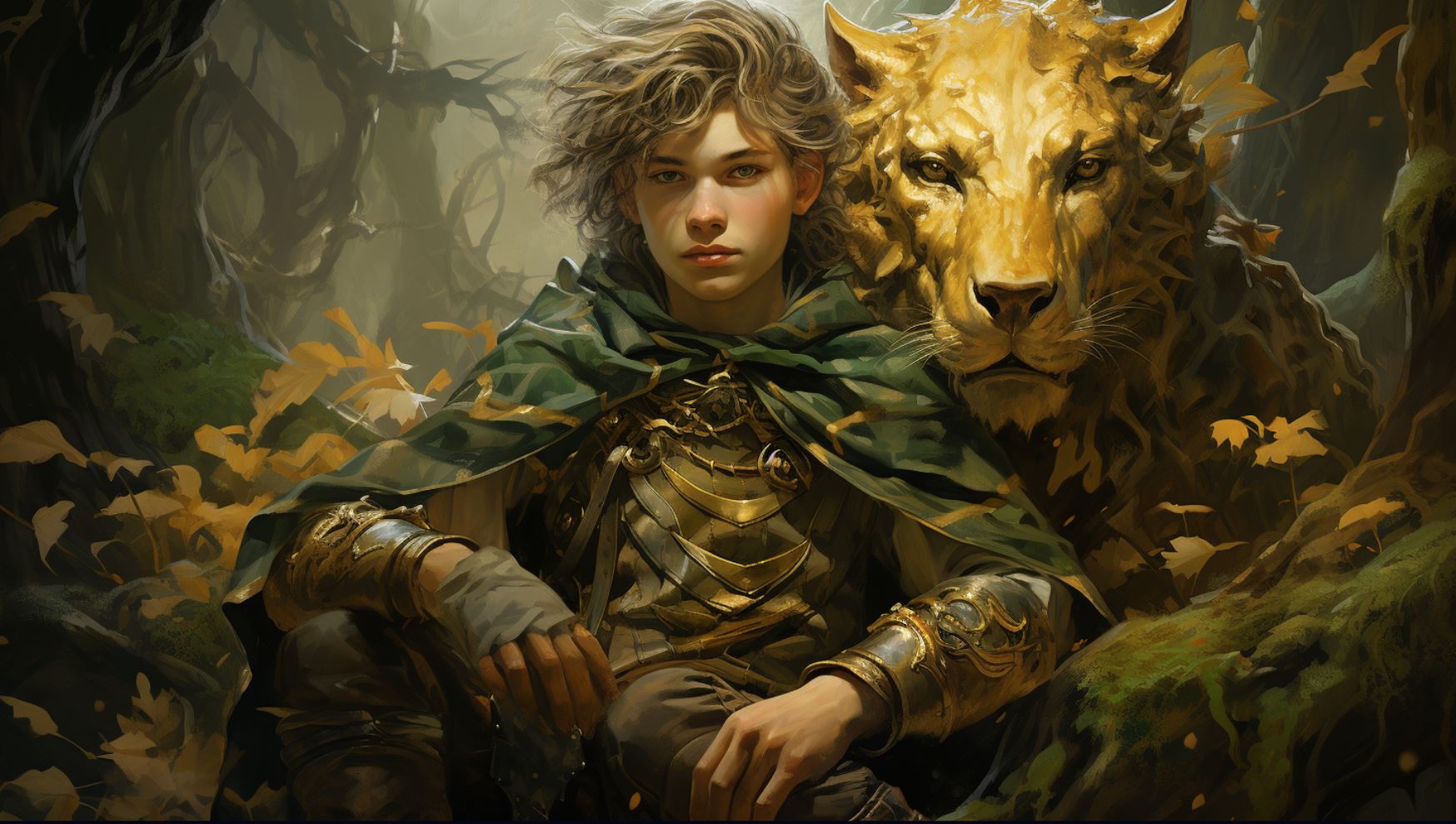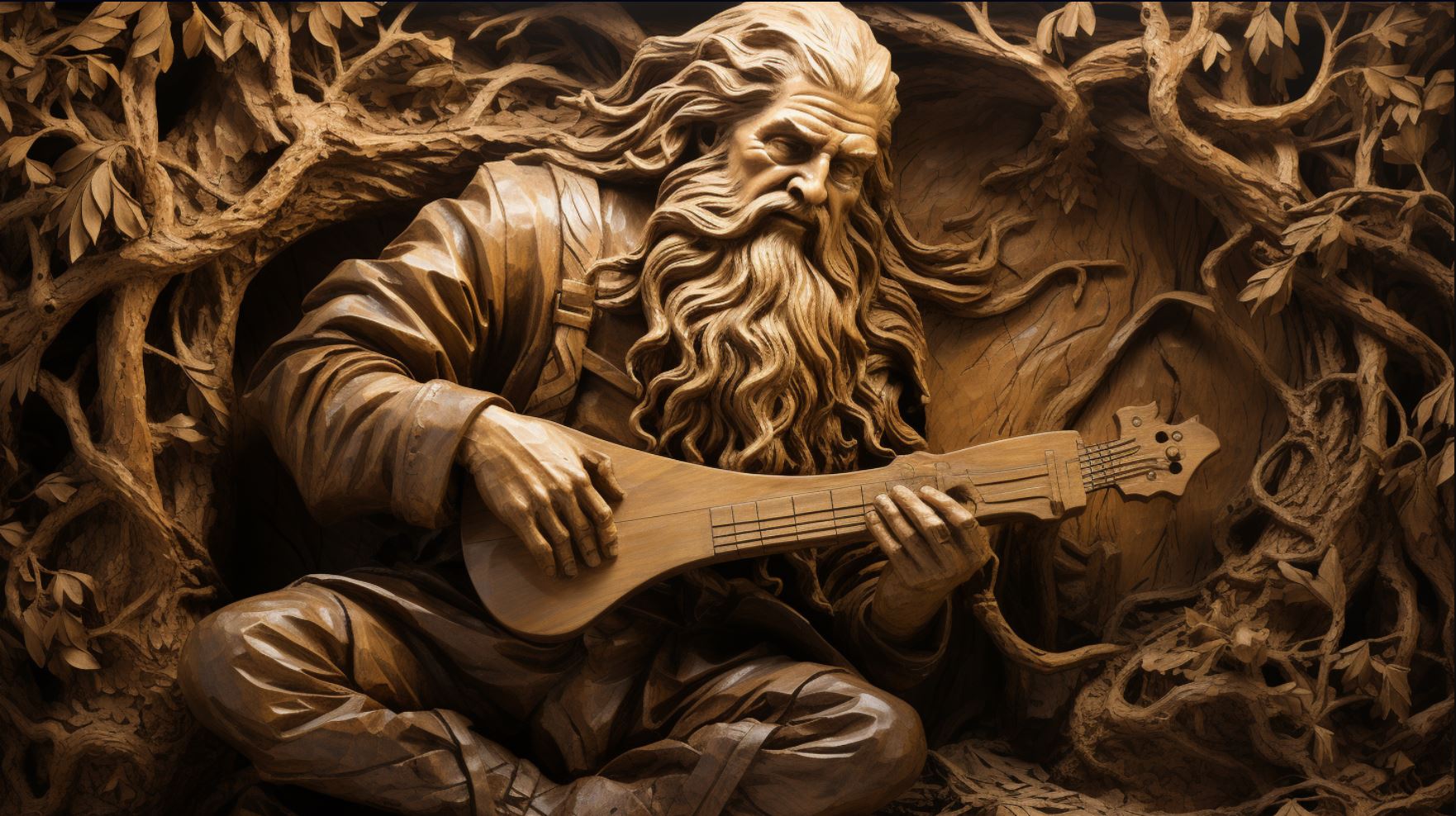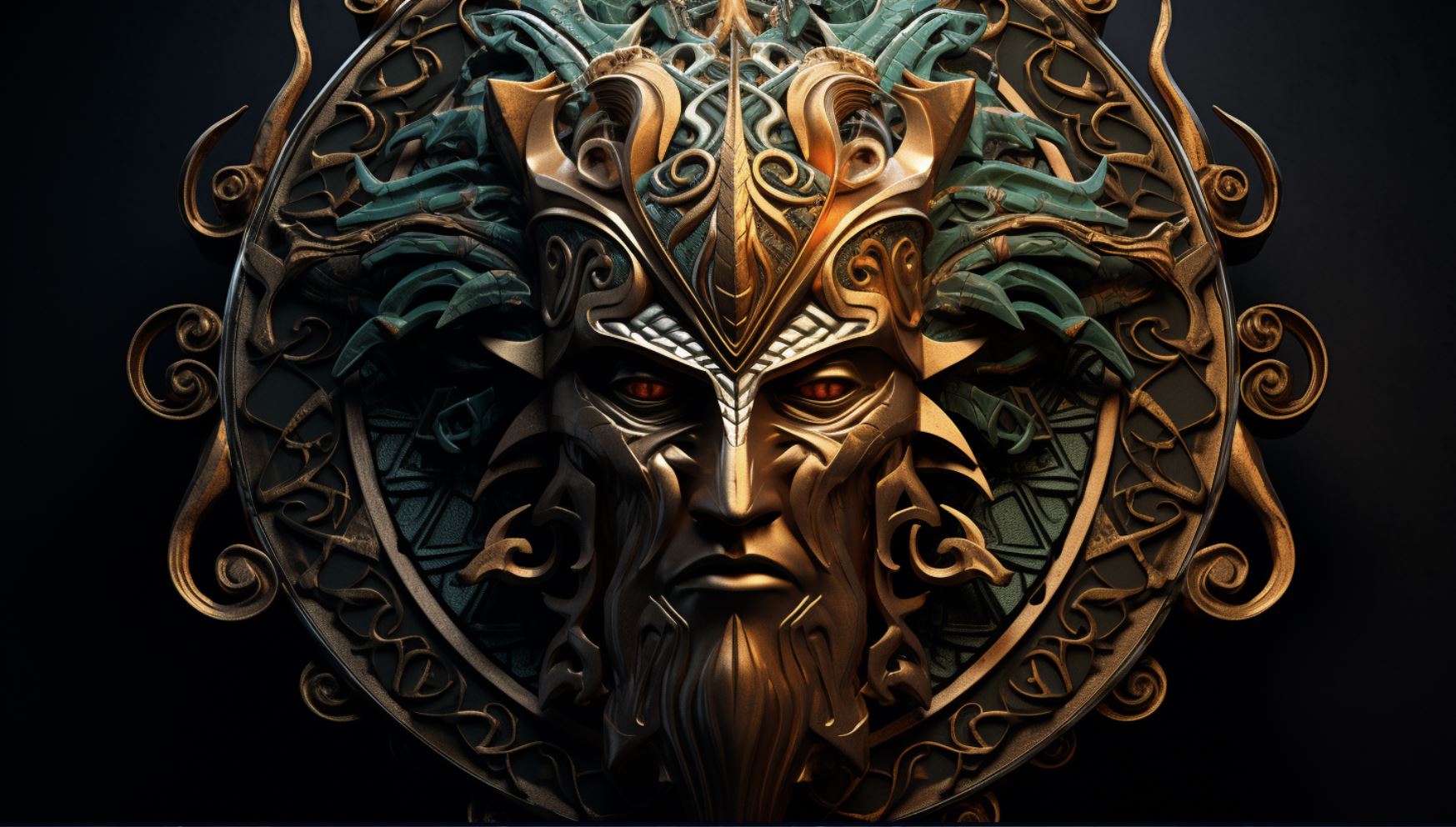Taranis Celtic God: Unveiling the Powerful Thunder Deity of Celtic Mythology
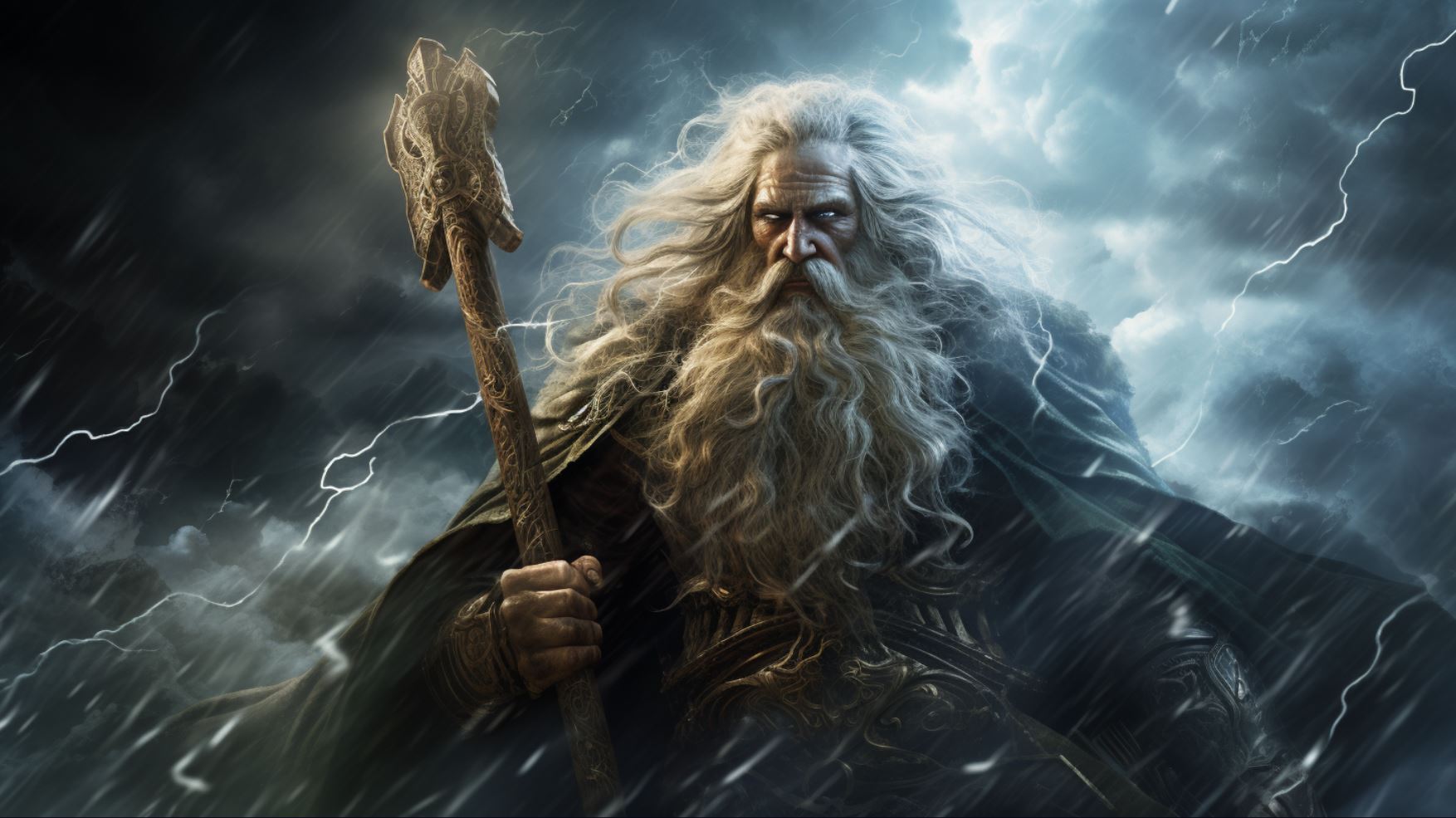
Taranis Celtic god, a powerful figure in Celtic mythology, was revered as the Thunderer and the deity of storms and thunder. He commanded the forces of nature and struck fear into the hearts of early humans.
Associated with the sacred wheel and armed with a thunder lance, Taranis symbolized strength and leadership among the Celtic gods. This article explores Taranis’ significance, his connection to druidry, and his presence in various mythologies and cultural references.
Discover the enigmatic realm of Taranis, the Celtic god of thunder and storms.
Who is Taranis?
Taranis, the enigmatic Celtic god, holds a significant place in ancient mythology. Delving into the depths of his existence unravels tales of power, awe-inspiring thunderstorms, and a revered deity among the Celts.
Let us explore the various facets of Taranis, shedding light on his name, his role as the Celtic god of thunder and storms, and the fear he instilled in the hearts of early believers.
The Name and Meaning of Taranis
Taranis derives his name from the ancient Celtic and proto-Celtic words associated with thunder. Among the Celts, his name resounds like the rolling thunder that fills the skies. The very essence of his name encapsulates the power and force he wields, reinforcing his connection to the elemental chaos of storm and tempest.
Taranis as the Celtic God of Thunder and Storms
Taranis reigns supreme as the pan-Celtic god of thunder and storms. Believers across Celtic lands revered him as the ultimate Thunderer, commanding nature’s mightiest forces. With his formidable presence, he controlled the ferocious storms that swept across the land, invoking fear and awe in equal measure.
As the Celtic god of thunder, Taranis personified the electrifying power of nature and its potential for both destruction and renewal.
Taranis as a Powerful and Fear-Inducing Deity
Taranis was not only a god of thunder but also a protector and leader among the Celtic deities. His authority and strength resonated through the divine realms, where he held a prominent position.
Early humans, overwhelmed by the raw might of the storms he commanded, found themselves in awe of his power. Taranis struck fear into the hearts of mortals, leaving them trembling in his wake.
His thunderous weapon, akin to a lance, symbolized his untamed might and formidable presence.
Taranis in Celtic Mythology
Taranis, the Celtic god of thunder and storm, holds a significant place in Celtic mythology, featuring in various myths and legends across different cultures. Let’s explore some of the prominent roles and associations Taranis holds within Celtic mythology.
Taranis in Irish Mythology: Tuireann and Lugh
In Irish mythology, Taranis appears under the name Tuireann and plays a significant role in the story of Lugh, another prominent pan-Celtic god. As Tuireann, he is portrayed as a powerful deity with connections to thunder and storms.
His presence in this mythology further highlights his status as a revered figure within the Celtic pantheon.
Taranis in Roman Mythology: Associated with Jupiter
The Romans, upon encountering Celtic culture, drew parallels between Taranis and their own deity Jupiter. Taranis was associated with Jupiter due to their shared domain over thunder and storms.
This connection further elevated Taranis’ importance as a deity, creating cultural links between Celtic and Roman mythologies.
Taranis in Greek Mythology: The Cyclops Brontes
Interestingly, Taranis also finds a connection in Greek mythology through the figure of the Cyclops Brontes. Brontes, whose name translates to “thunder,” symbolizes the thunder and storm aspect associated with Taranis.
This interplay between Celtic and Greek mythologies adds another layer of complexity to the character of Taranis and showcases his widespread influence across different cultures.
Symbols and Representations of Taranis
Taranis, the Celtic god of thunder and storms, was associated with powerful symbols and representations that captured his essence and significance in Celtic mythology. These symbols and representations provide insights into the beliefs and worship practices surrounding Taranis.
Taranis’ Weapon: The Thunder Lance
One prominent symbol associated with Taranis is his thunder lance, an awe-inspiring weapon resembling a thunderbolt. This divine weapon represented Taranis’ ability to command storms and unleash destructive forces. It was believed that Taranis would wield this thunder lance during his fierce battles, instilling fear in both humans and deities alike.
The thunder lance symbolized the immense power and authority that Taranis possessed as the god of thunder and storms.
The Sacred Wheel: Taranis’ Symbol
Another significant representation of Taranis is the sacred wheel, which holds profound spiritual and religious meaning in Celtic culture. The wheel symbolizes the cyclical nature of life, the turning seasons, and the eternal cycle of creation and destruction.
Taranis’ association with the sacred wheel reflects his role as a deity who governs the natural forces, orchestrating thunderstorms and maintaining cosmic equilibrium. This sacred symbol often adorned sacred spaces, including altars and ritual objects, as a means of invoking Taranis’ divine presence and protection.
Taranis’ Association with the Chariot and the Sun
Taranis was also associated with the chariot and the sun, further emphasizing his connection to cosmic forces and celestial power. The chariot symbolized Taranis’ ability to traverse the skies, guiding thunderstorms and leading the celestial bodies in their heavenly dance.
Similarly, his association with the sun highlighted his role in governing the life-giving aspects of nature and ensuring fertility and abundance. Taranis’ connection to the chariot and the sun reinforced his status as a prestigious deity whose influence extended beyond the realm of storms and into the wider cosmic order.
The symbols and representations associated with Taranis not only conveyed his formidable nature as the god of thunder and storms but also provided a deeper understanding of the Celtic worldview and their reverence for the forces of nature.
These symbols served as potent reminders of Taranis’ power and presence, inspiring awe and respect among the Celtic communities who sought his blessings and protection.
Druidry and Taranis
The connection between Taranis and druidry is deeply rooted in Celtic mythology and spiritual practices. Druids, the wise and revered religious leaders of the ancient Celts, held Taranis in high regard and incorporated him into their beliefs and rituals.
Let’s delve into the fascinating realm of druidic beliefs and practices, Taranis’ role in druidic rites of passage, and the ways in which his worship is celebrated within druidic communities.
Druidic Beliefs and Practices
Druidry was an intricate belief system intertwined with nature worship, ancestral reverence, and the pursuit of wisdom.
Druids viewed the natural world as sacred, interpreting divinity through its cycles and manifestations. They believed in the existence of multiple realms, inhabited by diverse deities, spirits, and energies. Taranis, the god of thunder and storms, personified their understanding of the immense power and chaos present in nature.
Druidic practices involved ceremonies, rituals, and spiritual observances that honored the gods and sought their favor. Druids served as intermediaries between the mortal realm and the divine, performing divination, healing, and other sacred duties.
Taranis played a central role in their rituals, symbolizing the uncontrollable forces of nature and serving as a bridge between the earthly and spiritual realms.
Taranis’ Role in Druidic Rites of Passage
Within druidic traditions, various rites of passage marked important milestones in individuals’ lives.
These rituals served as transformative experiences that guided individuals through transitions and connected them to the cycles of nature. Taranis, as the god of thunder and storms, had a specific role in these rites of passage.
During initiation ceremonies, young individuals seeking to become druids would face challenges meant to test their mettle and devotion. Taranis’ thunderous presence was invoked to signify the intensity and transformative power of these experiences.
The storms, associated with his domain, were seen as catalysts for personal growth and spiritual awakening.
Furthermore, Taranis played a vital role in druidic marriage ceremonies, symbolizing the union of two individuals in sacred partnership.
The thunder and lightning associated with Taranis represented the dynamic energy and passion inherent in the bonds of love and commitment.
Celebrating Taranis: Druidic Communities and Resources
Across the Celtic lands, druidic communities formed sacred spaces where individuals could gather to worship and honor Taranis and other deities. These communities offered a supportive network for those seeking spiritual guidance and shared experiences.
Druidic celebrations dedicated to Taranis often included rituals, storytelling, music, and dances, all aimed at invoking his power and forging a deeper connection with the divine realm.
For those interested in delving deeper into the study and practice of druidry, numerous resources, such as books, workshops, and online communities, are available.
Druidic organizations and libraries, such as the Order’s Library, provide access to a wealth of knowledge and wisdom passed down through generations. Through projects and collaborations, modern druidic practitioners actively contribute to the preservation and evolution of this ancient spiritual path.
- Discover the ancient wisdom of druidry
- Explore the practices and rituals of modern druidic communities
- Connect with like-minded individuals in online forums and communities
- Access valuable resources at the Order’s Library
- Participate in projects that contribute to the flourishing of druidry in modern times
Embrace the magic and wisdom of Taranis within the vibrant tapestry of druidic practices and communities, as you embark on a transformative journey guided by the power of nature and the divine.
Taranis and Cultural References
As a powerful deity in Celtic mythology, Taranis has left his mark not only in ancient tales but also in various cultural references throughout history. These references can be found in art and archaeological artifacts as well as in popular culture, such as comics and literature.
Taranis in Art and Archaeological Artifacts
Art and archaeological artifacts provide valuable insights into the portrayal of Taranis and his significance in Celtic culture. Statues and reliefs made of bronze, like the famous Caldera of Gundestrup, depict Taranis with his iconic symbol, the sacred wheel.
These artifacts indicate the importance of Taranis as a deity associated with thunder and storms, revered by the ancient Celtic communities.
The use of Taranis’ symbol, the sacred wheel, further symbolizes the cyclical nature of life and the power of storms in Celtic beliefs.
These artistic representations provide glimpses into the reverence and awe that the Celts held for Taranis, the thunder deity who controlled the forces of nature.
Taranis in Popular Culture: Comics and Literature
Beyond ancient artwork, Taranis has also made appearances in popular culture, captivating the imagination of modern audiences.
In the world of comics, Marvel has incorporated Taranis as a character in various storylines, showcasing his thunderous abilities and mythical origins to a wide audience.
Additionally, the beloved French comic book series Asterix features references to Taranis, bringing Celtic mythology to life through humorous storytelling.
These cultural references help to keep the legacy of Taranis alive, introducing new generations to the rich world of Celtic gods and their epic tales.
Furthermore, Taranis’ connections to other mythological figures, such as his association with Jupit
Unanswered Questions about Taranis
The Limited Historical Records on Taranis
When it comes to understanding Taranis, one significant challenge lies in the scarcity of historical records.
The ancient Celts relied heavily on oral tradition, leaving behind little written documentation about their deities and religious practices. As a result, much of what we know about Taranis comes from the accounts of Roman writers who encountered Celtic culture.
While these Roman accounts give us some insights into Taranis and his role as the god of thunder, they often lack detailed information or offer conflicting interpretations. Scholars have to reconstruct aspects of Taranis’ mythology and significance by piecing together fragments from different sources, such as inscriptions, artwork, and comparative studies with other Indo-European mythologies.
Speculations on Taranis’ Powers and Influence
Due to the limited historical records, numerous questions remain unanswered regarding Taranis’ powers and influence. For example, while Taranis was undoubtedly associated with thunder and storms, it is unclear how his role as a deity extended beyond these natural forces.
Some scholars speculate that Taranis may have symbolized more than just the destructive aspects of thunder. It is possible that he represented renewal and fertility, as thunderstorms can bring rain, which is vital for crops and vegetation.
Others propose a connection between Taranis and celestial elements, suggesting that he could have been associated with the sun or had cosmological significance.
Furthermore, the exact nature of Taranis’ relationship with other Celtic gods, such as Esus and Toutatis, remains a subject of speculation.
While historical records hint at a tríada sagrada (sacred triad) involving these deities, the precise roles and dynamics within this group remain unclear.
In Summary
The limited historical records on Taranis pose significant challenges for understanding this powerful Celtic god. Scholars must rely on fragmented accounts, comparative studies, and speculative theories to reconstruct his mythology and grasp the extent of his powers and influence.
As we continue to explore and uncover more about the ancient Celts and their religious practices, the enigmatic figure of Taranis will undoubtedly remain a subject of fascination and inquiry.
.

